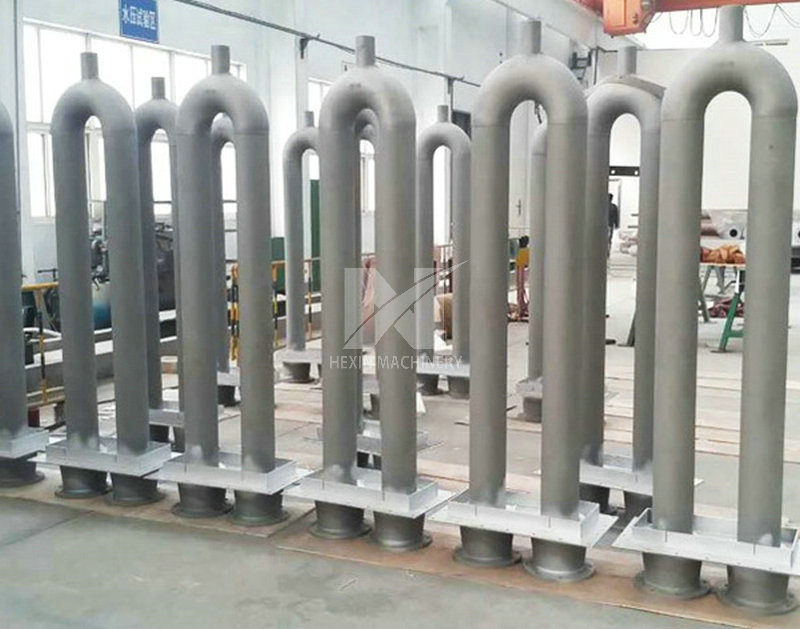Radiant tubes U type by spun casting
Product Category:Metallurgical IndustryPrice:Negotiation

U-shaped radiant tube
The structure of U-shaped radiant tube: it is mainly composed of two sections of centrifugal casting main tube, 180° elbow, flange and fixed plate. It is installed in the furnace in conjunction with the burner burner and other structures. After the burner is ignited, it burns in the tube, and the exhaust gas generated by the combustion is discharged from the other end of the tube. High-efficiency radiant tubes often have waste heat recovery devices, which can not only improve the temperature distribution on the surface of the radiant tube wall, but also improve thermal efficiency.
The key component of the U-shaped radiant tube is the tube body, which radiates the heat released by fuel combustion to the heated material. Because the surface of the tube body is in direct contact with the combustion flame and high-temperature flue gas, the working environment is harsh. For the radiant tube of metallic materials, the material will fail due to local burning and oxidation for a long time; if along the length of the tube body There is a large temperature difference, and the pipe body needs to bear a large thermal stress, which will directly affect the length of the life of the pipe body; coupled with the impact of the airflow during combustion, it will also produce a certain vibration. Therefore, the material of the radiant tube must meet the following conditions: 1) high temperature resistance; 2) high surface blackness; 3) high thermal conductivity; 4) high structural strength and good air tightness; Under the action of working temperature and its own load, it has good oxidation resistance and can withstand high enough high temperature creep and failure strength; 6) small thermal expansion coefficient; 7) low cost.
Most of the radiant tubes produced by HEXIN are made of heat-resistant steel, and the temperature range is about 900-1000°C. Its processing method is usually made by rolling, extruding steel pipe or centrifugal casting. Theoretically, the maximum service temperature of various heat-resistant steels will change with the change of service conditions and controllable atmosphere. In the actual production process, a reasonable radiant tube material should be selected in combination with the kiln temperature, furnace atmosphere, and the type of material to be heated.





